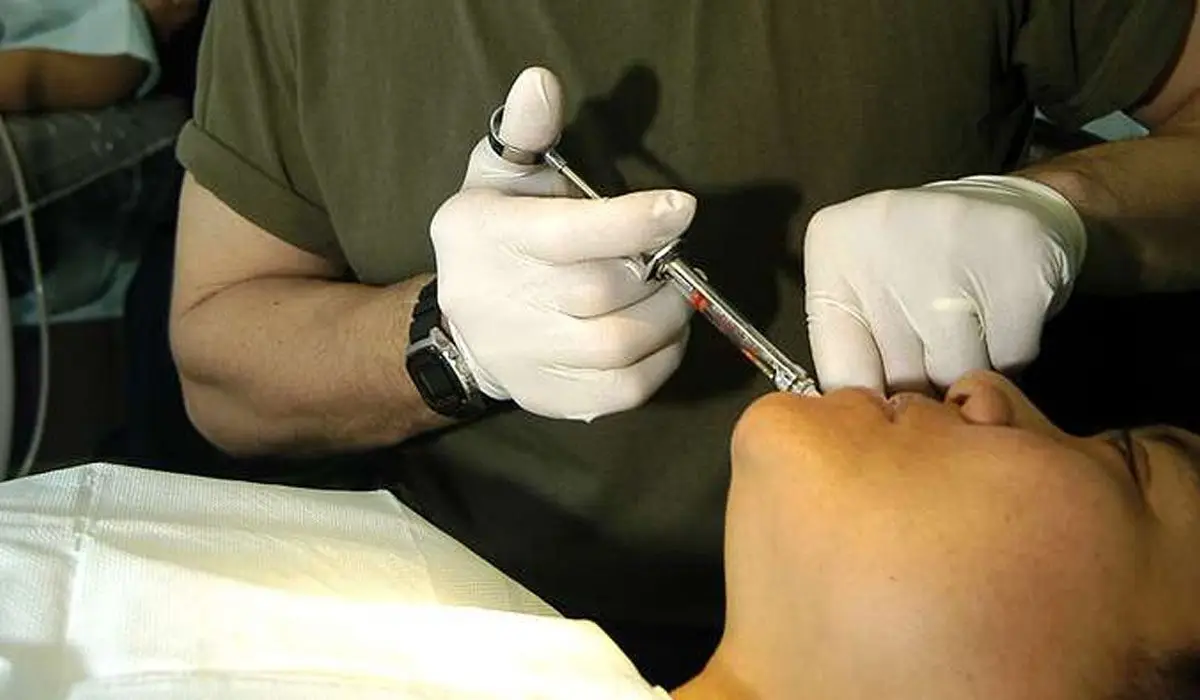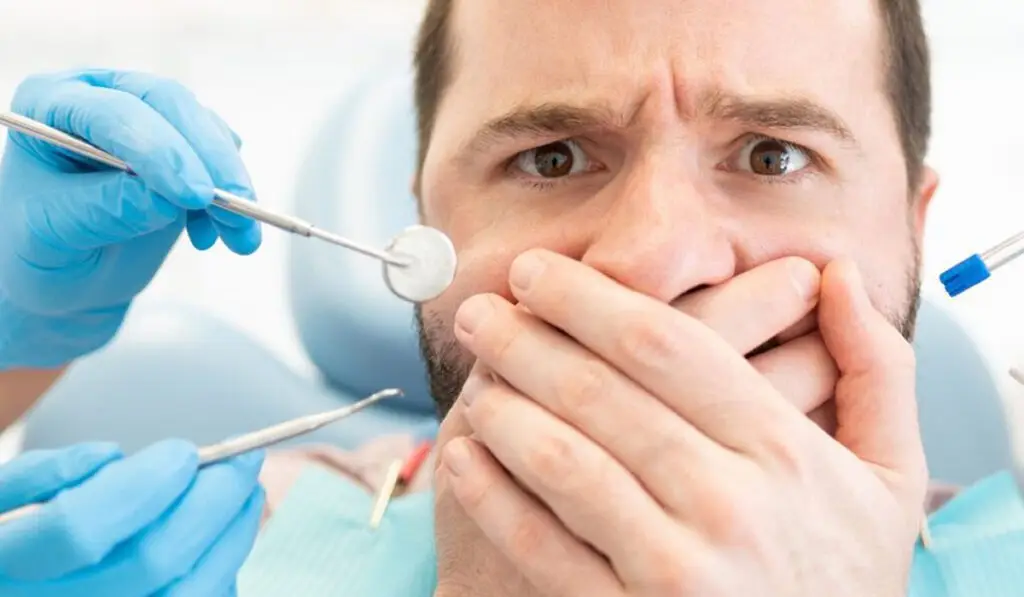
Have you ever had bad anxiety because of swollen and bleeding gums? Since we don’t like going to the dentist because we are afraid of doctors and pain. Schaumburg Dentistry can do invisible dental braces or any dental procedures without making it hurt. You can worry less about your teeth and the dental business. We will take care of your teeth and bring you comfort as well. So, if you want to experience our services, contact us at 847-985-8100 to set up a meeting.
It can be scary to go to the dentist. In some cases, it can be very painful. But it doesn’t have to be that way. Dental work doesn’t have to be too painful if you take the proper precautions and plan. Here are ten suggestions for a painless dental procedure:
Ask about sedation at dentist options like laughing gas or oral conscious sedation. It can help you feel calm and at ease during your appointment so you can focus on what’s going on inside your mouth.
It can be helpful to take a friend to the dentist. Having someone there can help you stay calm and make the process easier. Also, you’ll have someone to talk to when you’re done.
The dentist might tell you to use Listerine. It makes the gums less swollen and kills germs at the same time. If you don’t floss before going to the dentist, food can get stuck between your teeth and cause problems.
Patients should take aspirin or ibuprofen 30 minutes before surgery, dentists say. After your surgery, you may be given medicine to help with pain or swelling. They might have alcohol in them, which can make you sleepy and make it dangerous for you to drive or use machinery.
If you are worried about pain, ask your dentist to use a gel or anesthetic that goes on the skin. It will numb your teeth so the dentist can work on them without making you feel pain.

Nitrous Oxide (Laughing Gas)
This gas helps people relax by making them temporarily less sensitive to pain. Because they are calm and at ease, it makes people feel safe with their dentists and less anxious during a visit. Due to its side effects, nitrous oxide is not always a good choice (headaches and nausea).
Oral Sedation
If a patient is nervous about their visit, they may be given something to take by mouth to help them relax. Oral medicines are taken about an hour before the procedure (usually in pill form). This kind of sedation makes people feel sleepy but does not put them to sleep. The goal is to make patients feel more at ease during their procedure so they don’t feel worried or scared.
IV Sedation
Invasive or painful procedures may need to be done under IV sedation. This type of painless dental injection gives drugs through an IV. This method helps dentists control how much sedation they provide to patients.
Local Anesthesia
Local anesthesia numbs a specific part of the mouth so the patient doesn’t feel any pain during the procedure. A lot of the time, this type of anesthesia is used for more invasive procedures like extractions.
General Anesthesia
Patients will be put to sleep with anesthesia, so they don’t feel any pain during their procedure. Most of the time, this type of anesthesia is only used for invasive procedures that could cause a lot of pain.

One of the best ways to stay calm during a dentist visit is to pay attention to your breathing. Take slow, deep breaths through your nose and out of your mouth. It will help slow down your heart rate and keep you from feeling dizzy or faint during the procedure.
If you can’t find peace by breathing, try something else. You can distract yourself by thinking about different things. It includes your favorite vacation spot, dinner, or anything else.
Don’t be afraid to ask the dentist any questions you have if you’re nervous or worried about the procedure. They will be glad to answer your questions and make you feel better.
Listen to music or an audiobook, so you don’t think about how you’re breathing. It will help you forget about what’s going on and pass the time quickly.
Choosing a dentist with a lot of experience can help to make dental work less painful. Before you make an appointment, ask your friends and family for recommendations. You can also read reviews online.
After the procedure, pat yourself on the back. Give yourself a treat, like a new book or your favorite food. It will make you feel better about going to the dentist.
Many things can help with tooth pain and stress. It is simple to avoid dental pain. You’ll find that going to the dentist isn’t as bad as you thought.
It’s not always bad to go to the dentist. Modern dentistry has a lot of benefits that don’t hurt or make you feel bad. Our pain-free services enhance our patients’ dental visits. We’ll figure out what you need with the help of our dentist. We’ll talk about your worries so that your experience as a whole is better.
Sedation dentistry is something our team knows a lot about. We know what tools, medicines, and skills are needed for your dental procedure. Contact 847-985-8100 to set up a meeting at Schaumburg Dentistry for painless dental implants.
Painless dentistry is also known as sedation dentistry because it uses safe and mild forms of sedation to calm the patient prior to any procedure. This method not only relieves anxiety, but it also numbs the affected areas so that the patient does not feel the dentist’s or hygienist’s work.
Many patients have a fear of the unknown, which is compounded by dental anxiety or fear of the dentist. That’s why I always remind them that if something hurts, something is wrong. Many procedures are sedation extractions or have local numbing anesthetics, so patients should feel nothing more than discomfort.
Dental implants are surgically implanted into the jawbone. Because the metal root fuses with your bone, the implants will not make noise, slip, or cause bone damage like dentures or fixed bridgework.
Fortunately, a general dentist understands that pain is frequently associated with oral surgery. The dentist will almost certainly prescribe a pain reliever for the patient to take during the recovery period. This medication can also help with nausea and swelling.
There are no needles, no drills, and no pain. Your dentist will usually numb your mouth as part of the filling procedure because they will need to use a drill to remove decayed tissue from inside the tooth. Without anesthesia, you may experience some pain while this is happening.
The Wand is a computerized device that gently pushes local anaesthetic around a tooth that needs dental treatment. It differs from ordinary syringes in that it resembles and is held like a pen, making it less threatening. The local anaesthetic is administered gradually and gently.
The Most Common Dental Procedures and Their Mechanisms:
1 – Teeth Cleanings. This is by far the most common reason people visit the dentist.
2—Teeth Whitening. Like cleaning, whitening is a relatively discomfort-less process.
3 – Extractions.
4 – Veneers.
5—Fillings.
6 – Crowns.
7 – Root Canal.
8 – Braces/Invisalign.
The painful dental conditions that are most common are:
#1 Abscess Tooth: When it comes to potentially serious and even critical oral conditions, the abscessed tooth takes the crown.
#2 Cavity: Do you have a cavity?
#3 Dislodged / Displaced Teeth: Dislodged or displaced teeth are an immediate dental emergency.
The extensive procedure for a root canal treatment, as well as the soreness after each procedure with mild discomfort for a few days, makes the root canal treatment more painful. A dental implant causes pain only when the anesthesia wears off and the tooth to be replaced by an implant is removed.
It is suggested that the intensity of pain with tooth extraction is higher compared to the implant placement procedure.
Many patients feel drowsy but relaxed after receiving oral sedation. You’ll still be awake and conscious, able to respond to questions or requests. Some patients become drowsy and fall asleep, but can be easily roused if necessary. Patients have described it as being like being in a dream.